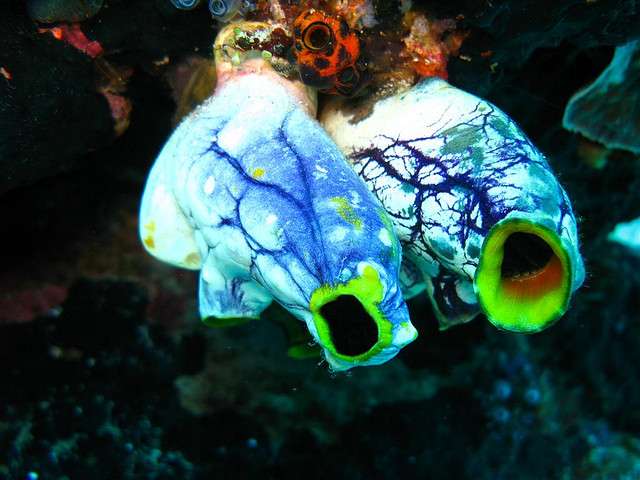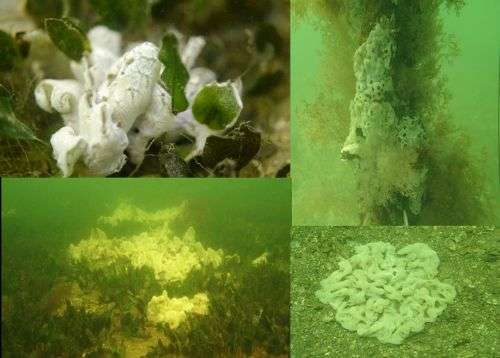The little squirt that can pack an environmental punch

The humble sea squirt may be diminutive in size and stature but according to UWA PhD student Tiffany Simpson introduced species of this strange looking animal have the potential to do big damage.
She is examining how one invasive colonial ascidian is impacting sea grasses in Perth's Swan River so that scientists can assess the risk of potential, large-scale, future damage.
Sea squirts are more scientifically known as tunicates, or ascidiaceans, as they belong to the class Ascidiacea and are in the phylum Chordata, which is the same phyla that includes whales, sharks, pinnipeds and fish.
Introduced colonial ascidians have the potential to change the structure and function of natural marine communities, particularly if they cause a substantial loss or degradation of resident foundation species such as seagrasses.
The invasive colonial ascidian Didemnum perlucidum was recently discovered in the Swan River Estuary, growing on the native seagrass Halophila ovalis.
In the Swan River, this is the dominant seagrass species and is a very important component of the primary production, biodiversity and habitat structure of the ecosystem.
However, the abundance of this underwater plant has been in decline, primarily due to human activities and stressors including increased temperature and sedimentation, excessive nutrient runoff, seaweed proliferation and invasion of non-native species.

Given the observed impacts of related species in other systems I am expecting to find the sea squirt D. perlucidum would adversely affect seagrasses in the Swan River, with possible flow on effects to the rest of the ecosystem.
My study aims to document the distribution and abundance of D. perlucidum in the Swan River, and to determine whether its colonies could cause a negative impact on H. ovalis and associated flora and fauna.
The impact on seagrass was measured in terms of change in biomass, decline in photosynthesis efficiency and sulphide uptake as a stress response.
D. perlucidum had a clear seasonal pattern in abundance, with the amount of seagrass cover peaking in summer months and retracting in winter.
When present, the seagrass spreads from the river mouth to about 15km upriver.
It is highly variable in coverage and colony size and largely present near areas of infrastructure, particularly mooring buoys.
The sea squirt completely engulfed seagrass plants on the substrate or underlying layer, enveloping all the plant tissue beneath the colony.
This meant a reduction in the photosynthetic ability of the individual leaves, and a reduction in total plant biomass.
In the study the impact of the introduced variety of sea squirt was measured at the individual species level.
While ecosystem level impacts are often difficult to predict and may remain innocuous for some time they are so important to monitor.
The Swan River Estuary is already vulnerable to multiple stressors so the added stress of fouling tunicates may pose a greater threat in the future.
It is important to identify whether the small-scale patches of D. perlucidum are impacting seagrass beds beyond their capacity to adapt or recover, in order to identify the risks of irreversible large-scale future impacts.
Provided by Science Network WA
This article first appeared on ScienceNetwork Western Australia a science news website based at Scitech.




















